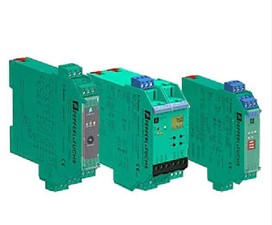Features of Pepperl + Fuchs Capacitive Sensor
Features of Pepperl + Fuchs Capacitive Sensor
Pepperl+Fuchs FM capacitance sensor measurement circuit has high sensitivity, the output frequency of the signal is easy to be measured with digital instruments, and it communicates with the computer. It has strong anti-interference ability and can send and receive to achieve the purpose of remote measurement and remote control. Therefore, in practical applications, the differential structure is often used, which not only doubles the sensitivity, but also greatly reduces the nonlinear error and enhances the anti-interference ability. Capacitive sensors are simple in structure, easy to manufacture, and have high accuracy; they can be made small to achieve some special measurements. Capacitive sensors generally use metal as electrodes and inorganic materials as insulating supports, so they can work at high and low temperatures and strong In harsh environments such as radiation and strong magnetic fields, it can withstand large temperature changes, high pressure, high impact, overload, etc.; it can measure ultra-high pressure and low pressure drop.
Pepperl+Fuchs capacitive sensor has very small electrostatic attraction between the plates and requires very little energy. The movable part can be made small and thin, and light in weight. Therefore, the natural frequency is high and the dynamic response time is short. Working at frequency is particularly suitable for dynamic measurement; higher frequency power can be used, so the system has a high operating frequency. It can be used to measure high-speed changing parameters, such as vibration. The capacitance value of a capacitive sensor is generally independent of the electrode material, which is beneficial to choose a material with a low temperature coefficient, and because its own heat is very small, the stability is also very small.






